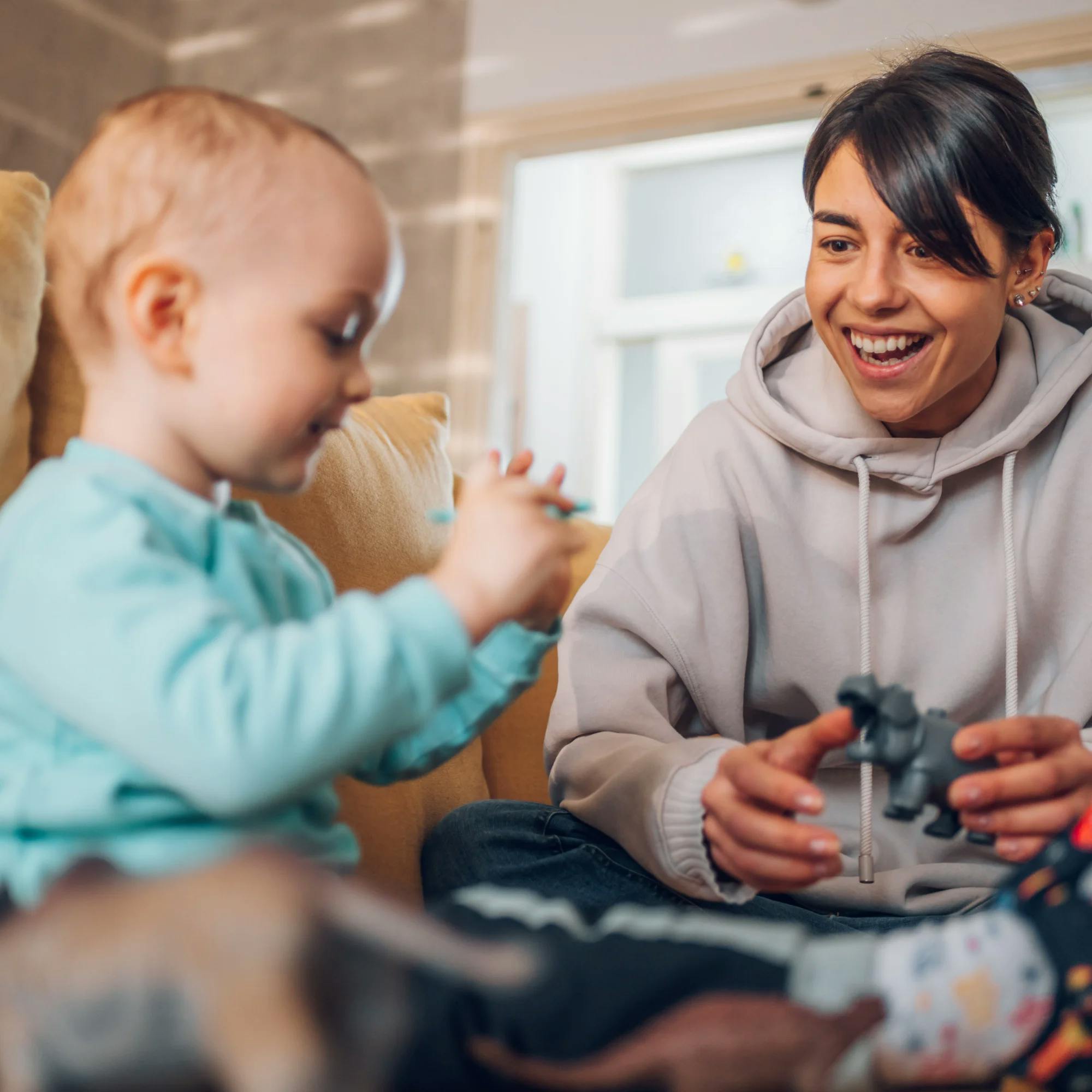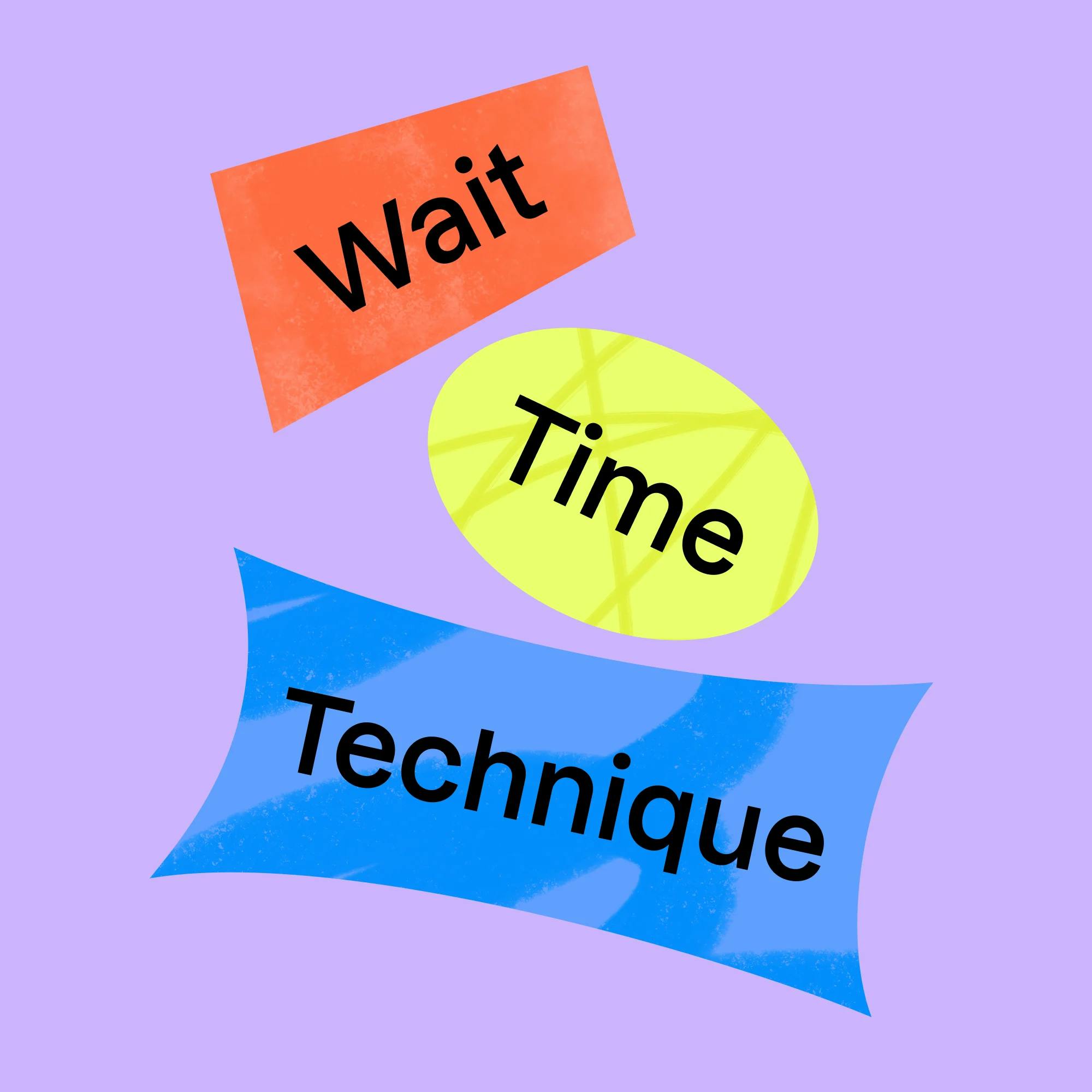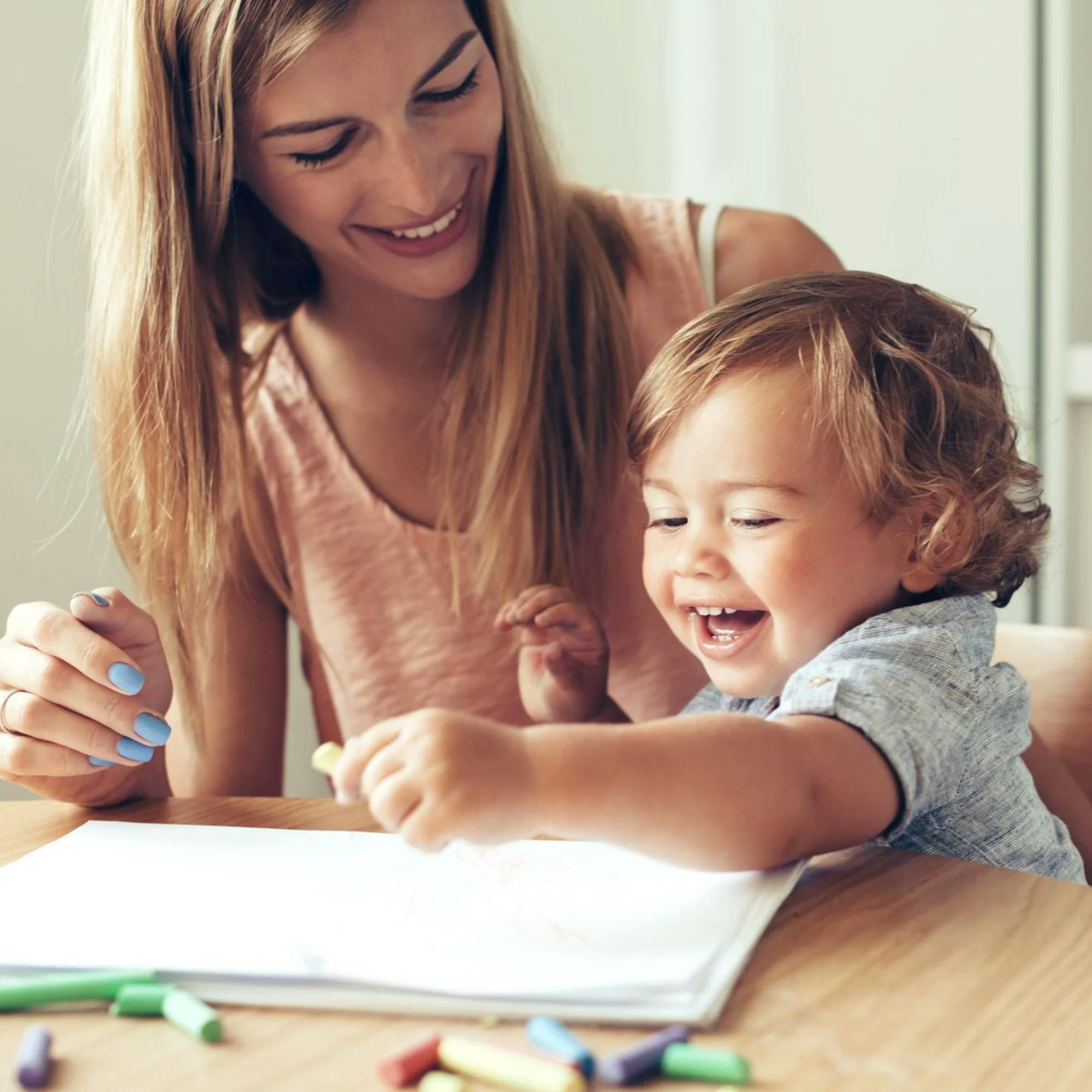
15 Easy Speech Therapy Exercises Parents Can Use at Home
 Alexis Irazoque, M.S., CCC-SLP
Alexis Irazoque, M.S., CCC-SLP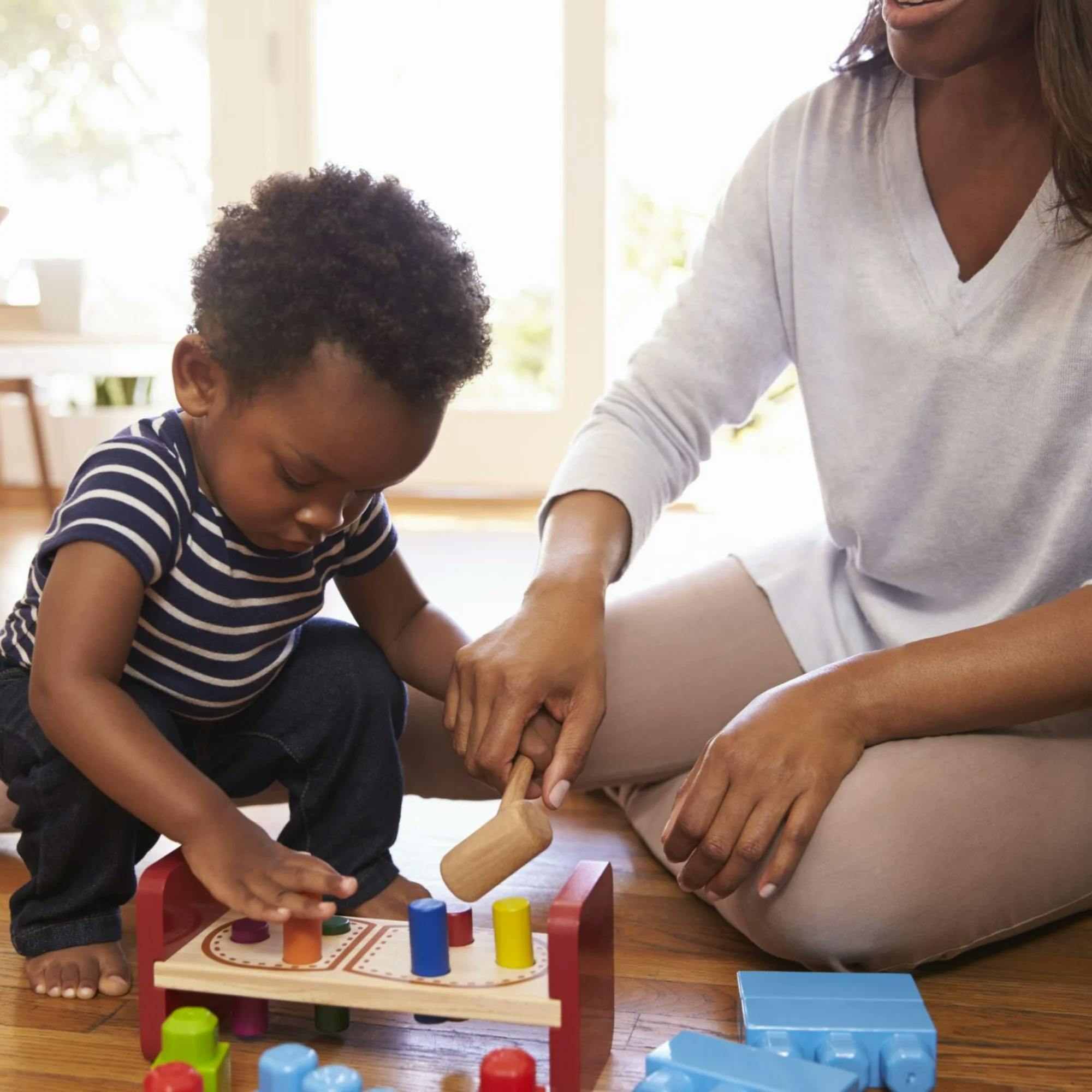
As speech-language pathologists, our job doesn’t end once the speech therapy session is over. In fact, one of the most important parts of our profession is coaching parents and caregivers on ways to help their child with speech therapy at home.
Speech therapy shouldn’t be limited to 30 or 60 minutes a week. Speech skills need regular practice during daily routines. That’s how children learn best, make the most progress, and generalize new skills into their everyday lives. In fact, research from Vanderbilt University shows that parents can significantly improve their children’s speech-language development.
Does helping your child with their speech feel overwhelming? With these 15 easy and proven speech therapy strategies, you can support your child's progress at home, stress-free.
Find the right speech therapist for your child
We'll match you with a licensed speech therapist who's experienced in your child's needs and available when you are.
 Get started
Get startedWhy it’s worth using speech therapy exercises at home
Practicing speech therapy exercises at home with your child helps them make faster, stronger progress. In fact, one study found that kids’ outcomes improve when parents collaborate with speech pathologists.
When you practice with your child at home, you turn everyday moments into learning opportunities. For example, you might practice consonant sounds while cooking dinner, or play word games during bath time. These casual practice sessions make your child feel more confident. They’ll start to see speech practice as a natural part of their day, not just something that happens in the therapist’s office.
Did you know? Expressable speech therapists assign personalized Learning Paths in a special online portal just for your child. Your portal is packed with videos, tips, and at-home activities to help your child make faster progress.
Curious or concerned?
Our free screener is tailored by age and covers all areas of speech, language, and feeding. Find out if your child might need speech therapy.
 Screener for children
Screener for children15 speech therapy exercises to practice at home
As a parent or caregiver, getting involved with your child’s speech therapy services can make all the difference. Even playing simple word games while you’re in the car can help improve language skills!
Whether your child is struggling with an autism-related speech delay, stuttering, or another language disorder, here are 15 interactive exercises you can use to support your child’s progress. Click the link to jump to a section!
2Model simple language for your child
3Use parallel talk to narrate what you’re doing
4Expand your language into longer phrases
9Repeat whatever strategy you’re using
12Use the contingency technique
1 Give your child choices
No one knows your child better than you. And this special connection means you can probably predict their needs and wants—in many cases before your child can communicate them!
While this saves time for busy family members, it can also limit your child’s chance to use and practice core language skills.
This is why providing choices is so impactful. We don’t always want to just give a child something. Instead, we want to encourage them to independently make requests by using language. We also want them to learn the words needed to answer open-ended questions, such as “What do you want to play?”
Giving your child a choice of two speech therapy activities motivates them to respond using language to communicate their desires. You might say, “Do you want the blocks or the bubbles?” As an added bonus, offering choices can also decrease any frustration when you don't correctly guess what your child wants.
2 Model simple language for your child
Imitation isn’t just a form of flattery. It's an effective speech therapy exercise that can help children learn new sounds and words.
Children learn language by listening to the people around them—and who spends more time with your child than you? Modeling simple language for your child helps them learn to imitate. Before long, they may start using those sounds and words independently.
When working on an object’s name, bring the object close to your mouth. Kids tend to focus on the toy or item rather than the person naming it. When you put the item by your mouth (before handing it to them), your child will begin connecting the item to the sound of its name.

3 Use parallel talk to narrate what you're doing
Providing children with a language-rich environment is important. One way to do this is with a speech therapy exercise at home called parallel talk. This means narrating actions as you’re doing them.
For example, let’s say your child is watching you cook. You could say, “I’m stirring the batter. Now, I’m pouring it into the pan. Oh, the oven is hot!” Or, when playing with your child, you might say, “Your car is so fast! Vroom!”
After enough practice, children will start to connect this language with the actions it’s describing. They may begin to do their own parallel talk.
4 Expand your language into longer phrases
Doesn’t it seem like every child’s favorite word is “no?” Well, we might as well take advantage of it by expanding that special word to a longer phrase: “No what?”
If your child gives you a “no,” try saying, “no cookie” or "no juice." Or, if they request “more,” expand that to add, “more bubbles.”
Expansion is all about helping your child progress from simple single words to longer two- and three-word phrases. You can work on using longer phrases in your child's natural, everyday life. Listen to what your child says, and then model a phrase that's one word longer.
When you provide this model, they will consistently hear what you expect of them. Then, they’ll begin expanding and using more complex language.
5 Use visuals
Everything is new for a preschooler or toddler, and they’re quickly learning new language skills. You can find ways to support this language growth every step of the way. Visuals are a great tool for this. Let’s explore how to use them.
Some children have trouble understanding the various transitions or routines that happen throughout the day. Putting pictures of daily routines on a board or a set of flashcards can help your child begin to anticipate what their day looks like—and decrease any possible negative reactions. They can even help decide what activities they’ll participate in. For example, they can choose a play activity that occurs after snack time and add it to the board.
Similarly, a family photo book can help your child learn the names of their siblings, pets, relatives, and friends. Taking time to point to and label people in the photos will encourage your child to do the same.
6 Try expectant waiting
Picture riding a roller coaster. It’s inching up and climbing the steep slope.
You know all that nervous excitement you feel right at the top, moments before you come speeding down the hill?
On a much smaller scale, this is the feeling we want kids to have right before imitating an action. For instance, if you suddenly stop one of your child’s favorite activities, like blowing bubbles, we want your child to feel a sense of anticipation and excitement.
While they’re waiting, you could say, “Oh, you want more bubbles? More?” This encourages them to respond with a word or gesture to express their desire to continue.
If you’re rolling a car back and forth, you could say, “Ready, set…” and then pause. The whole idea is to wait for your child to say “Go!” before pushing the car. This increases their use of language, gets them excited, and helps with attention skills.
Quick demo: The "wait time" technique helps your child learn to talk
Watch here7 Give positive reinforcement
It’s so easy to tell a child “don’t do that” or “no.” And often it could very well be a matter of safety.
At the same time, it’s just as important that kids know when they’ve done something positive.
We might fall into the habit of saying “Good job.” But good job doing what? Why not try, “I love the way you cleaned up your toys all by yourself!” or “Wow, you ate all of your broccoli! That is amazing!” It’s important to be specific and highlight exactly what your child did well.
We all love and respond to positive reinforcement. Your smile, praise, compliment, and high five can also encourage your child to use more language throughout the day.


8 Try a little bit of sabotage
Sometimes, a little frustration can be a good thing, especially if it motivates children to communicate.
We’ve already mentioned the power of giving your child two choices and letting them pick. But what if you deliberately give them the wrong one? This creates the opportunity for your child to correct your mistake!
You can also try positioning your child’s toys or a tasty treat just slightly out of their reach. While they may be temporarily upset, this small act of sabotage can quickly teach children they need to use language to ask for help.
Back to our previous tip above, if they do say “help” or “open,” try expanding their request to a two-word phrase, like “help me” or “open please.”
9 Repeat whatever strategy you're using
Just as your child might watch the same "Paw Patrol" video over and over until they have it memorized, repetition is key to reinforcing speech therapy techniques and learning.
Using all the strategies described in this article may feel tedious at times, but this repetition enables your kiddo to learn new words, expand their vocabulary, and grow their communication skills.
Is your child struggling with a communication or language disorder? Expressable can help. Get matched with a speech therapist here.
10 Try teaching sign language
When working with toddlers, many speech therapists will introduce and encourage sign language. For some parents, this can be a cause of concern. They may worry their child will never learn to use words.
However, this is far from the truth. In fact, using sign language is an excellent way to help children transition to talking.
For toddlers, it’s often easier to gesture “all done” than to put those words together in a way others can understand. With signs, we typically start with the basics: help, all done, more, eat, drink, go, and stop. It’s important to model saying the word for your child while you teach them the sign.
We don’t expect a child to continue using sign language once they start verbally requesting. But for a frustrated kid who can’t seem to get their point across, signs are an effective communication tool.


11 Sing songs
The lyrics to a song never change, making music a great opportunity for children to learn new words.
For example, there are a ton of learning moments packed into the song “Wheels on the Bus.” It can help kids learn directions like “up,” “down,” “open,” and “shut.” Likewise, the song “Head, Shoulders, Knees and Toes” helps children learn about body parts. Reinforcing these songs with gestures increases a child’s vocabulary as well as their imitation of sounds and words. It’s the perfect activity!
Bonus tip: Use close phrases. When singing a song to your child, leave the phrase open and wait for the child to complete it. For instance, “Old McDonald had a farm---”. Make sure to praise them for their attempt, even if they don’t finish the lyrics. Then complete the phrase and move on to the next. Watch one of our speech therapists demo this technique in this brief video.
12 Use the contingency technique
Following directions doesn’t come easily (or willingly) for many kids. And few things can be as frustrating for parents.
In these cases, the contingency technique may be helpful. This means making a task that your child “wants” to do dependent on a task they “need” to do. For example, you could say, “First we read this book, and then you can play dinosaurs,” or “Once you finish eating your lunch, you can play outside.”
This reward mechanism helps your child follow instructions so that ideally everyone gets what they want!


13 Get rid of distractions
Young children learn language through play. When playing with your child, try to remove all possible distractions that take away from the activity and your bonding time. This might mean turning off the television or putting away your phone.
The quality of the time you spend playing with your child is just as important as the amount of time. It can be a quick 10-minute break to stack blocks while using techniques we’ve discussed, such as parallel talk and giving a choice. This will go a long way in helping to expand their attention and language skills.

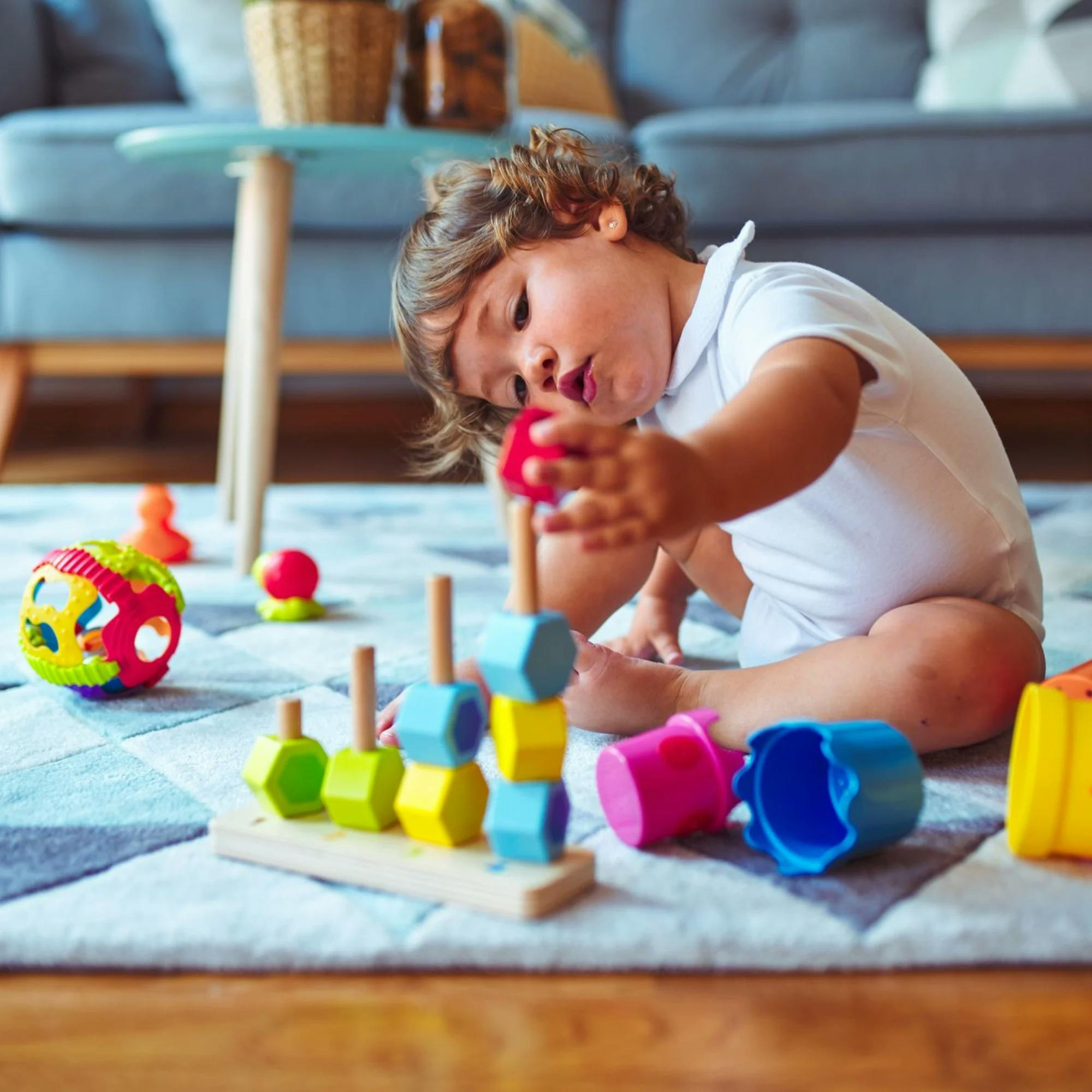
14 Read lots of books
You can help your child develop pre-literacy skills before they begin reading or using words consistently. And there are few gifts that parents can give their child more powerful than a love of books. Reading children’s books stimulates your child’s imagination and expands their vocabulary. It develops their listening and comprehension skills, and eventually helps them succeed at school.
A toddler can learn to turn the pages of a book and point to objects of interest while you name them. While it may be hard to do this throughout the day with an active kiddo, reading before a nap or as part of the bedtime routine can produce better results.
Initially, the story itself may not be as important as exploring the pictures and progressing in order through the book. However, as your child’s language and attention grows, they’ll be ready to hear the story and maybe even tell you part of it.
Check out this quick video, where one of Expressable’s speech therapists demonstrates a few of these tips with a favorite board book for toddlers!


15 Be silly
As speech therapists, we often tell parents that if it doesn’t feel awkward, you’re not being silly enough.
Children respond to strange speech sounds, silly faces, and exaggerated speech. Get on their level, making animal sounds or beeping like a car. Let your child sit in front of a mirror to make funny faces. Be energetic during play activities to let them know it’s okay to experiment with their voice. Try fun articulation exercises like tongue twisters.
The sillier you are, the more engaged and ready to participate they'll be. And that's where speech and language learning really takes off.
Tips for successfully using speech therapy exercises at home
If your child has a language or communication disorder, at-home speech therapy strategies are a great way to help your child make faster progress. And those strategies work even better with these tips:
Make speech practice feel natural. Weave it into your daily routines. During breakfast, practice articulation while naming foods. Or turn car rides into word-finding games.
Keep practice sessions short but sweet. Around 10-15 minutes works well for most kids. If your child gets tired or frustrated, stop before it becomes a struggle. A happy five-minute session is better than a tearful 15 minutes.
Get the whole family involved. Siblings, grandparents, or other loved ones can make learning fun. Plus, your child will see that everyone values clear communication skills!
Create a simple reward system. This might be a sticker chart or choosing a special fun activity. The key is to celebrate progress, no matter how small.
Most importantly, stay in touch with your speech therapist. Let them know what’s working and what doesn’t. They can help you adjust your approach and give you new ideas. (If you’re using Expressable, you can securely text your therapist to ask questions and get support between sessions!)
Help your child make progress faster with Expressable
With online speech therapy at Expressable, your child will learn from their speech therapist during their session. But you’ll also be coached as a caregiver on how to support your child’s progress—because kids learn best from the people they spend the most time with and love the most (that’s you!).
You’ll also have access to our innovative online learning portal, full of videos, tips, and activities to help make at-home speech therapy practice even easier. Remember, more practice means more progress!
Ready to get started? Find the right speech therapist for your family by clicking here.
How Expressable Can Help
Concerned your child isn't reaching age-expected milestones? Looking for communication support from a professional? Expressable is a national online speech therapy practice serving children and adults. We treat all major areas of communication and feeding, offer flexible hours including evenings and weekends, and accept most major health insurance plans. We’re proud to have earned more than 3,000 5-star reviews from our clients (4.9/5 average).
Our therapy model is centered on parent and caregiver involvement. Research proves that empowering caregivers to participate in their loved one’s therapy leads to better outcomes. That’s why we combine live, 1-on-1 speech therapy with personalized education and home practice activities for faster progress.
Communication is more than words. It’s how we share how we feel and show who we are. We’re here to help you or your child do just that.


